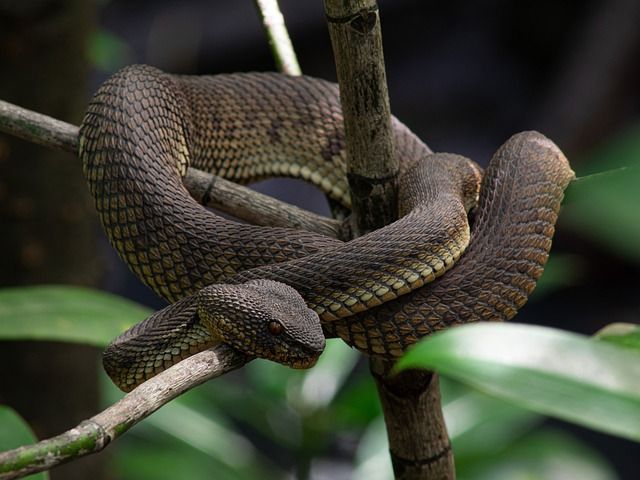A particular molecule in the venom of a type of snake is found to be useful in abating the reproduction of coronavirus in monkey cells, signalling a possible first step toward a potential drug to combat the COVID-19 causing virus. The study was conducted by Brazillian researchers.
The study, published in the scientific journal Molecules this month, found that the molecule produced by the ‘Jararacussu Pit Viper’, a South American species of snakes, diminished the coronavirus’ ability to multiply in monkey cells by 75%.
“We were able to show this component of snake venom was able to inhibit a very important protein from the virus,” said Rafael Guido, one of the authors of the study and a professor at the University of Sao Paulo.
Also Read: It happens only in Australia: Snake surprises woman in supermarket
According to researchers, the concerned molecule, taken from the same, is a peptide or chain of amino acids. These acids can link to an enzyme of the coronavirus called PLPro, which is vital to the reproduction of the virus, without hurting other cells.
The peptide or molecule, which is already known for its excellent antibacterial properties, can be processed and synthesised in a laboratory. This way capturing or raising the snakes becomes unnecessary.
Also Read: Python found in mall ceiling after going missing for 2 days. Watch
The next step in the process is to evaluate the efficiency of different doses of the molecule and whether it is able to prevent the virus from entering cells in the first place, according to a statement from the State University of Sao Paulo (Unesp), which was also involved in the research.
The researchers are hoping to test the venom molecule in human cells as well, however, no date or timeline has been given for the process.
Also Read: Watch | Gorillas find snake at Disney’s animal kingdom, video goes viral
It should be noted that the molecule does not harm other cells of the body.
The jararacussu snake is one of the largest snakes in Brazil. Its size is up to 6 feet (2 meters) long. It lives in the coastal Atlantic Forest and is also found in Bolivia, Paraguay, and Argentina.







